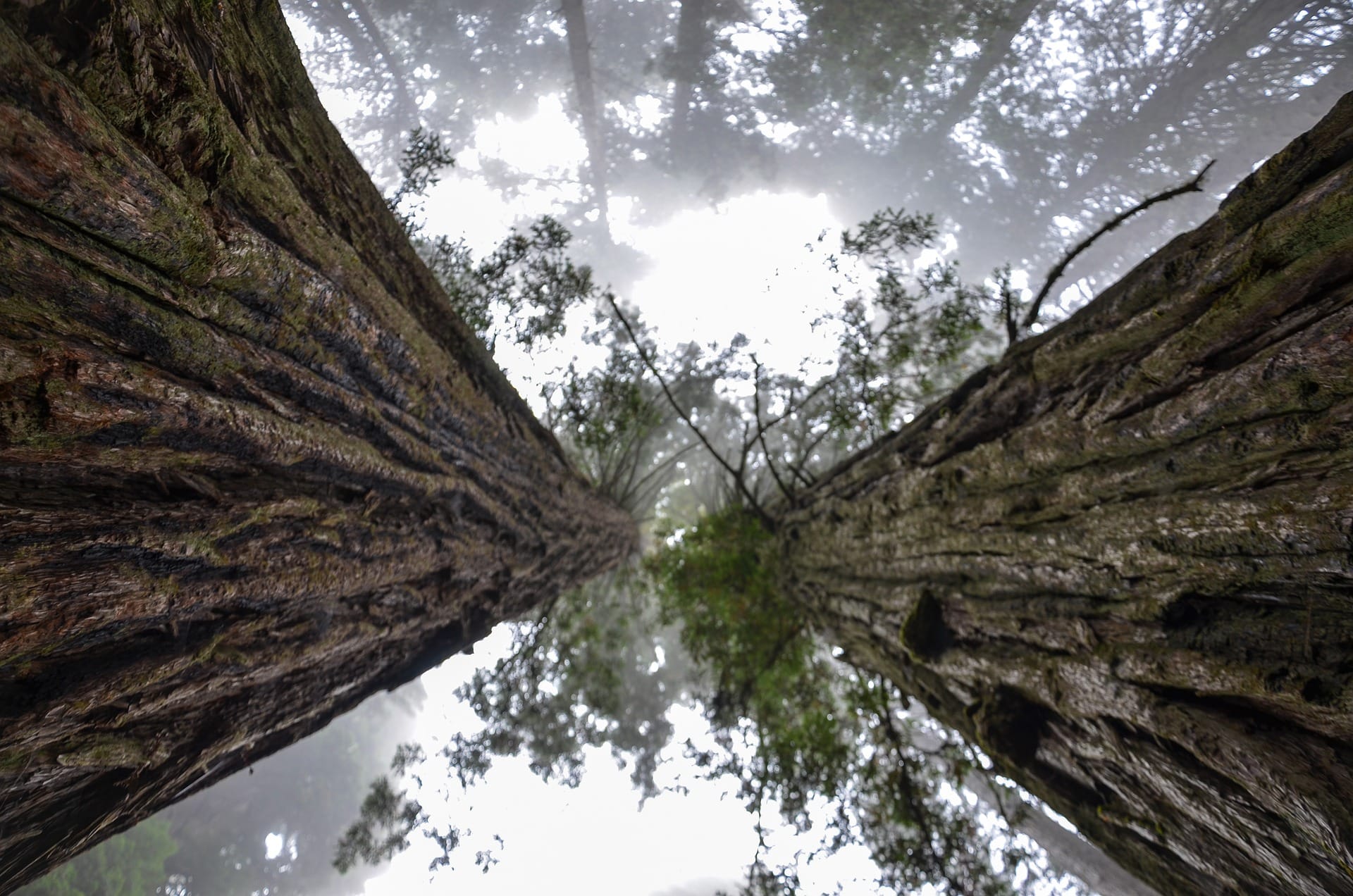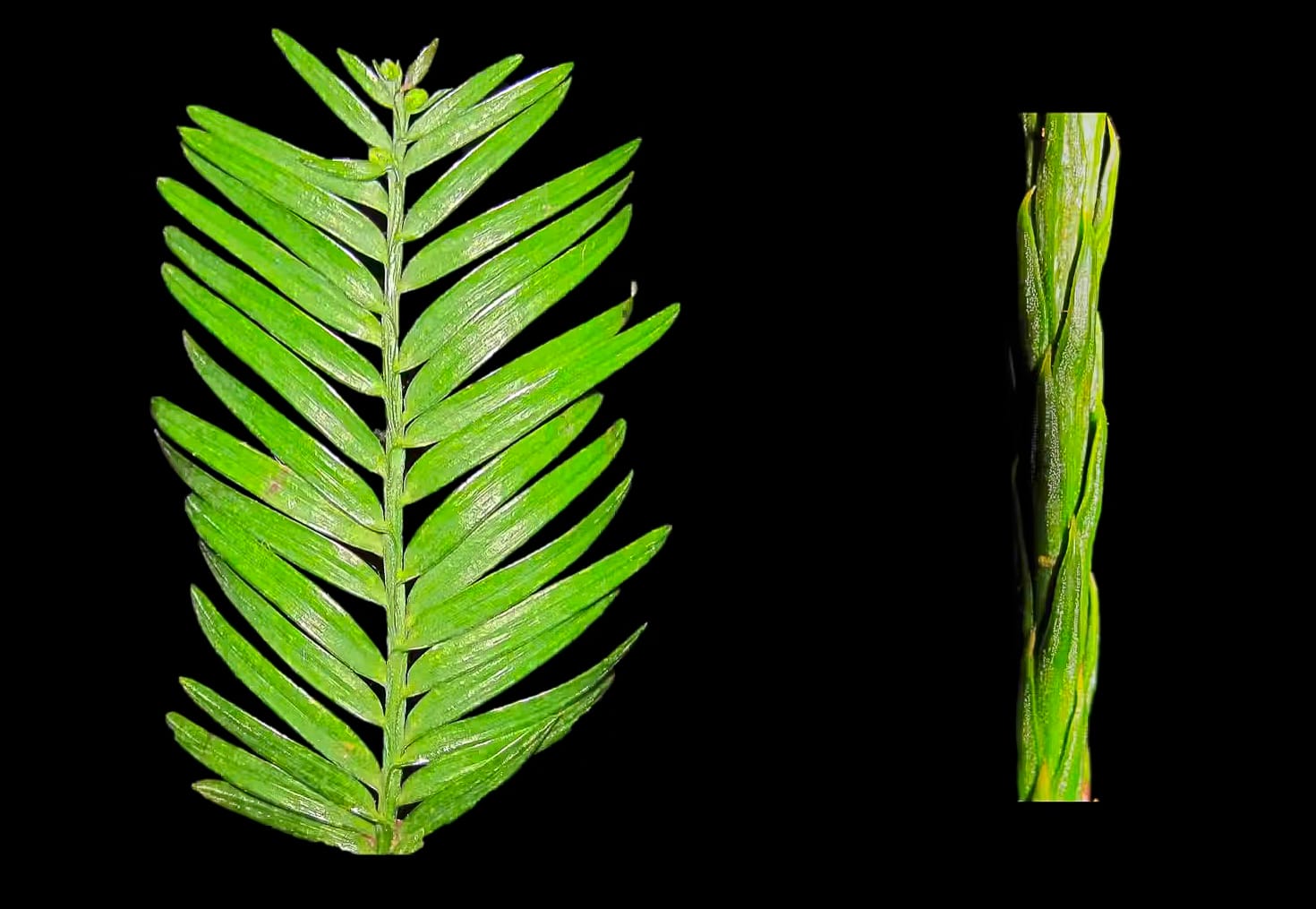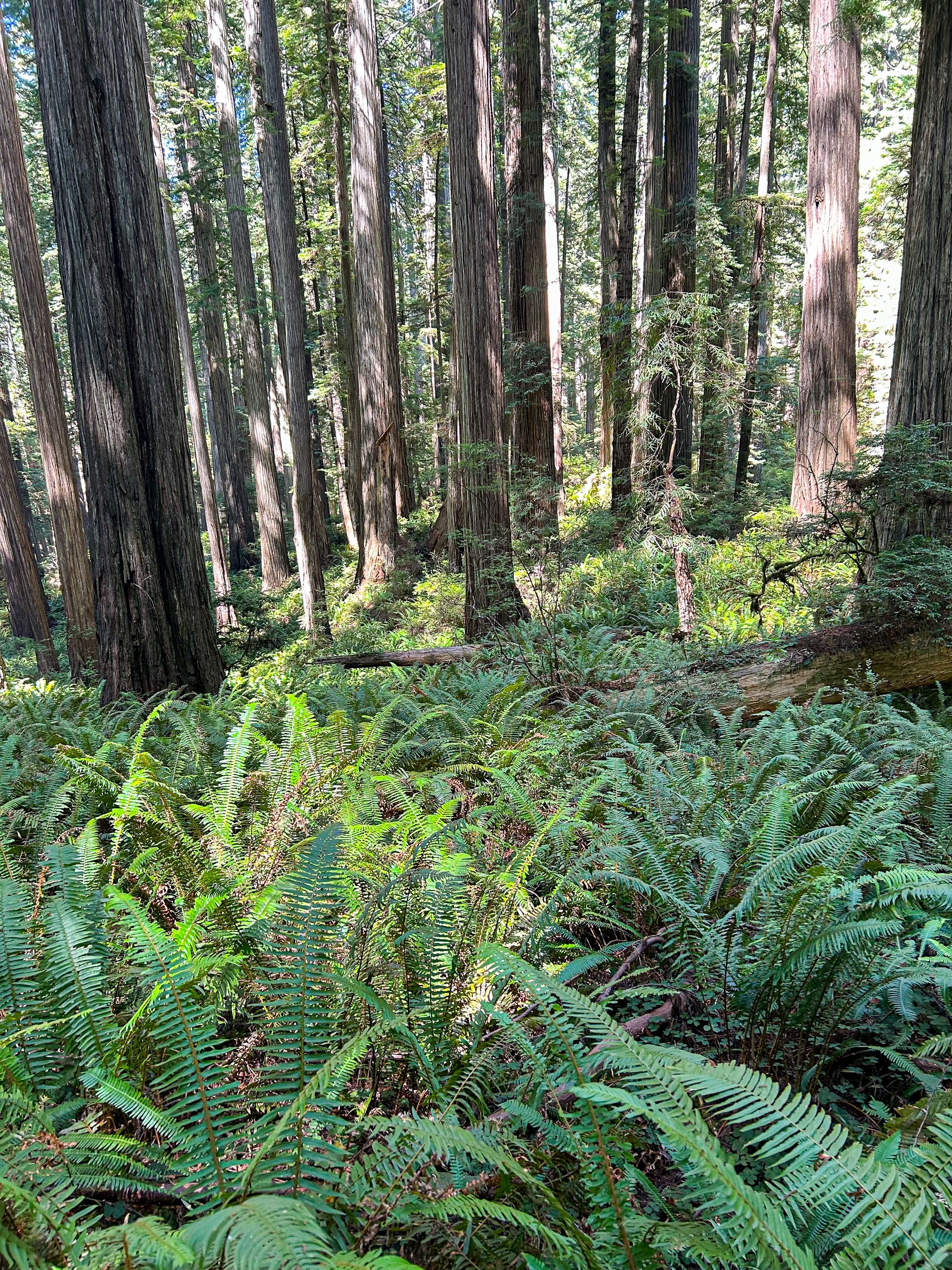Towering on Two Leaves

The story of how one of the earth's largest living beings endures drought and might ultimately help us with climate change.

If you've never seen a mature redwood tree, it's hard to imagine a tree so tall you can't see the top when you look up. Not only do these trees stand nearly as tall as a 40-story building, but their immense crowns block out any glimpse of their topmost branches, so your eyes are left traveling up the trunk into a receding tangle of needles and stems.

Sadly, trees of this size are also prized for their high-value lumber, and out of the half-million trees that likely existed when Europeans started settling California, there are an estimated 70,000 big old trees left.
When numbers drop this much, people start worrying about the threats facing that species, and in the case of redwoods, all eyes are on climate change.
Redwoods seem to defy the laws of gravity by pumping water through tiny capillary vessels to branches that are nearly 400 feet off the ground. This astonishing feat is possible because they acquire, and process, a lot of water (about 160 gallons a day).
Fortunately for redwoods, they grow in the narrow band of the Northern California coast that receives some of the highest rainfall amounts in the continental United States. But on the flip side, these same regions must also endure the long, dry summers so characteristic of California.

However, redwoods have figured out a solution that is unique among the world's trees—they only grow in the zone where dense fog blankets the coast each day. Each large tree then uses its 100 million leaves as a giant net to literally sweep droplets of water out of the fog.

By harvesting water this way, redwoods can supply 25-50% of their annual water needs from fog alone. So that's amazing, but what worries people is that climate change has already reduced the number of fog days by 30%—with no end in sight!
In the face of drought, all trees, and taller trees in particular, don't have enough water to keep their topmost branches and leaves alive. Because water is being pulled down by gravity, trees end up not having enough water to build up pressure and push water back up their stems.

However, a genius work-around used by redwoods was discovered by Alana Chin and her colleagues in 2022. Redwoods have two types of needles: flat spreading needles that do all the photosynthetic work, and wiry needles pressed against their stems that do no photosynthetic work but simply absorb and store water.

By absorbing and storing water in the needles in its canopy, a redwood tree reduces the need to continually pump water up its very tall trunk in order to keep the topmost branches and needles alive.
But what's truly amazing about this story is that redwoods adjust the ratio of these two types of leaves depending on the conditions they're facing. For example, in the sunnier and drier parts of their range redwoods have fewer flat (photosynthesizing) needles and a greater number of wiry (water storing) needles because they need water more than they need sun.

This flexibility gives redwoods a potent built-in mechanism for responding to climate change, and in fact redwoods seem to be thriving in the face of climate change because ultimately there is more carbon in the air available for growth.
Redwoods are now growing faster than ever before. As a result, redwood forests are now producing 2-3x more biomass than any other forest in the world, which means that each acre of redwood forest is locking up and storing the same amount of carbon as is produced by 270 cars every year.

This may not seem like much, but with 1.5 million acres of rapidly growing redwood forest in California, the impact is significant.

Member discussion